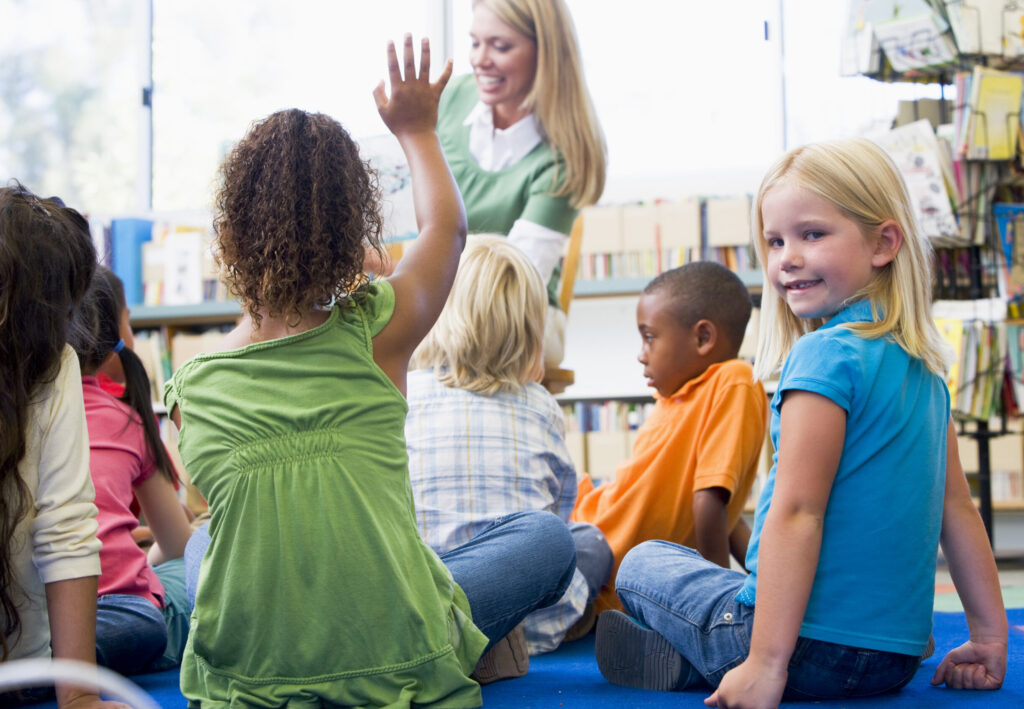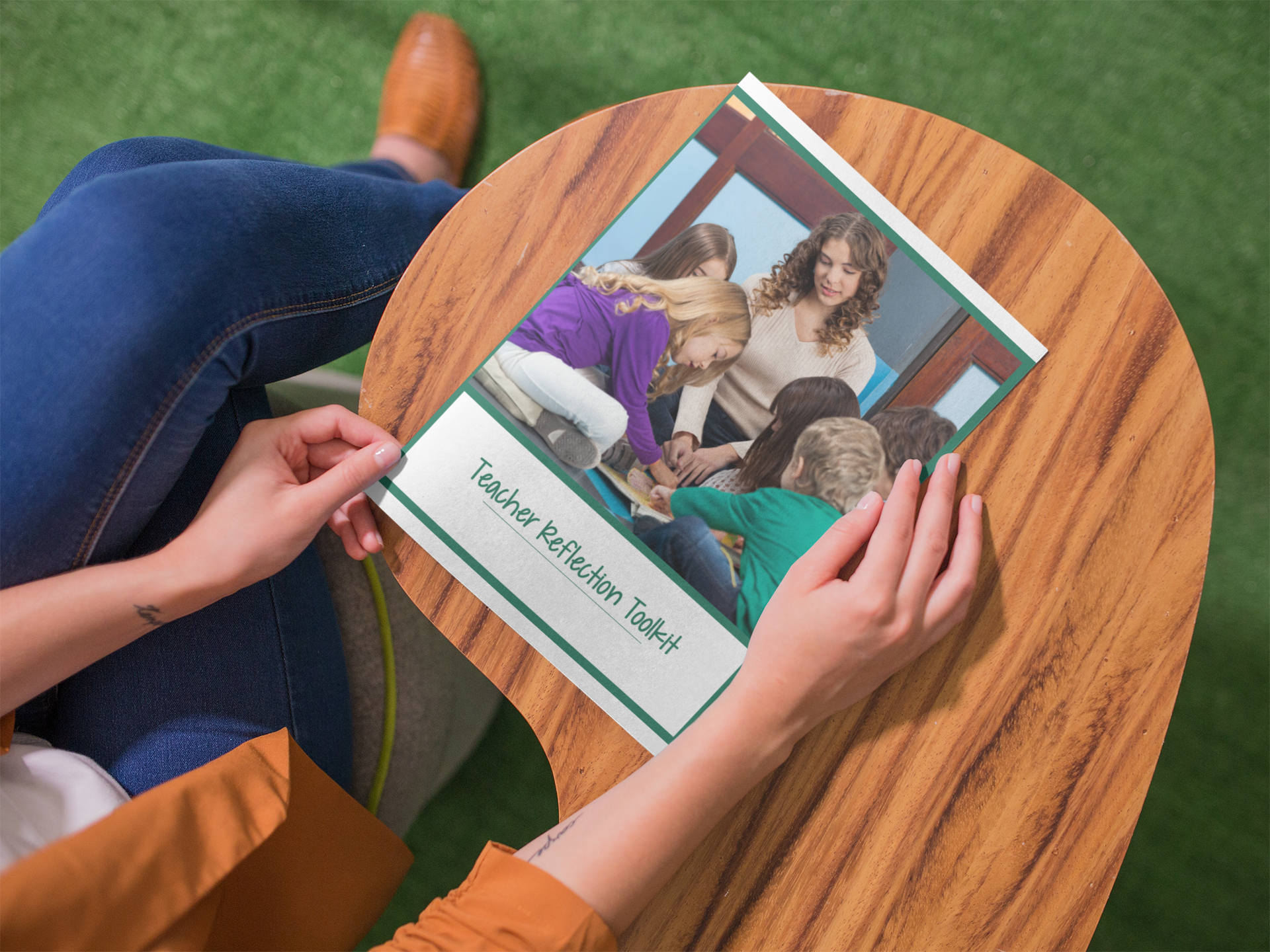Inside: How educators view children is referred to as the “image of the child” in a Reggio Emilia Approach to learning. This post explores the teacher view and how it plays a critical role in making decisions and forming relationships.

First Encounters with the Reggio Emilia Approach
I first discovered the Reggio Emilia approach through photos of classrooms I saw on blogs and Pinterest.
I was completely drawn in by their beauty, simplicity, and use of natural materials. My own classroom, which was splattered with brightly colored polka dots and Eric Carle cut-outs, was suddenly disappointing.
And so began my makeover madness. I slowly removed all the plastic and bright colors from my classroom. I scoured thrift stores and garage sales for wicker, wood, and lots of loose parts. I continued to add and take away items for about 4 years.
But this was a mistake – and here’s why!
Image of the Child: What You Believe About Children
The first, most essential step in embracing a Reggio-Inspired approach to learning is to define your image of the child.
Our beliefs about children, both consciously and unconsciously, affect everything we do in the classroom including how we set up our space, what our schedule looks like, what materials we use, and how we document student growth.
Most importantly, it impacts our day to day interactions and relationships with children and how they come to see themselves as learners.

For example, if we believe that children are not capable of being independent, then we will establish an environment with more teacher control and less freedom for children.
Yet, if we believe that children are capable of making their own decisions, we will provide choices of where children might sit, play, and learn.
Examining My Beliefs
In my rush to redo my classroom, I missed a BIG step. Learning about about the Reggio-Emilia approach, made me realize that I first needed to spend time thinking about my image of the child, before I lugged in more wood and wicker.
I once heard author, Bruce Coville say, “When what you believe and what you do are one in the same – you are at your very best.” As I reflected upon my own image of the child, I could see that there was a gap between what I believed and what I did in the classroom. The fancy educational term for this is “cognitive dissonance.”
While I might have told you that I believed in a child’s ability to choose, I could see that my practices told a different story, as I was still making many decisions for the children.

Aligning My Beliefs
So how did I go about bridging that gap? Well, I first brainstormed a bunch of words that were important to me as an educator. Words like child-centered, choice, developmentally appropriate, inquiry, wonder, joy, nature, and the four seasons all found their way onto my paper.
Next, I juggled the words around to create an “I believe statement,” but nothing seemed to flow or feel right.
So on a whim, I typed two words into a Google image search: children and seasons. This illustration by artist Julia Woolf popped up.
I knew immediately that THIS captured my image of the child. The children were playful, joyful, curious, free, and creative. They were full of wonder and if I could talk to them, would probably have a lot to say.
That was six years ago and this picture still guides my teacher journey. It is the featured image on my website and hangs in my home office, where I do all my school work. During times when my beliefs have been challenged, or I feel a little lost, I return to this image to remind me of what I know to be most important about teaching young children.
Exploring Your Image of the Child
And now it’s your turn. But first, I need you to promise me something. You must do what I suggest BEFORE you start Googling “Reggio-inspired classrooms!” Or am I too late? Hopefully, not!
Set aside time to brainstorm everything you believe about children. What comes up for you as you look at those words? Are you able to find an image that might help? Write a few sentences that define your image of the child.
Next, think about how well that image matches what you are currently doing in your classroom. Ask yourself, “What steps can I take to better align my beliefs with my practices? You can find a printable inside this FREE Teacher Reflection Toolkit.

Why should you do this? Because once you know what you believe about children, you can easily articulate why you do what you do! It will be a breeze to make decisions about classroom environment, scheduling, materials, planning, and more! And you can bet that you won’t be lured in by the “cute idea!”
You might be glad to know that my classroom makeover wasn’t a complete waste of time. It turns out that understanding the “why” behind the classrooms I admired, gave me a new perspective on the benefits of a natural classroom setting. I continue to choose calming colors and natural materials, not because I am going for a certain “look,” but for the soothing effect it has on both the children and I.
For more on professional development, check out the Growing as an Educator page in the Roots & Wings resource library.
Note:
This post was inspired by a trip to Ontario, Canada, where I attended the Transform Ed Workshop Series, given by Joanne Babalis. The presenter shared her experiences with a Reggio-Inspired Approach to learning and her Masters’ research on the seven layers of inquiry-based learning. The first layer, and the focus of this post, is the image of the child. Following posts discuss the other layers that include time, space, materials, listening, documenting and planning.



 Curious Classroom Book Study: Capture and Honor Kids’ Questions
Curious Classroom Book Study: Capture and Honor Kids’ Questions The One Thing You Should Tell Yourself to Find Contentment as a Teacher
The One Thing You Should Tell Yourself to Find Contentment as a Teacher Reggio-Inspired Kindergarten: The Art of Listening
Reggio-Inspired Kindergarten: The Art of Listening Curious Classroom Book Study: Lean Into a Crisis
Curious Classroom Book Study: Lean Into a Crisis